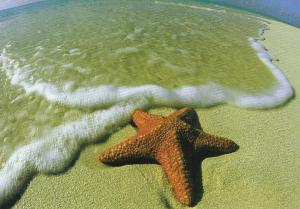 |
| Coach Rathke |
I really don't recall when Brian Rathke become a
role model, it seemed like he was there forever sometimes boldly in front and other time quietly in the background, but always there.
Somewhere in those early AAU age group years he kept order. Those formative silly days, he corralled us from running around the pool deck, stopped us from snapping each other with towels to often, kept the atomic sit-ups and if got into real trouble the famous "60 second" treatment wasn't far behind. By todays standards... well thats something we swimmers keep to ourselves. Lets suffice it to say with Brian you knew where the rules were and where you stood.
As we got older he kept us on task both in school and in the pool, keeping us focused on doing well while teaching us life lessons. He used swimming as a teaching tool to focus us on how to achieve goals, do well in life, sometimes outside of our comfort zone.
I remember early on learning that he was one of the fastest 50
butter flyers in the world, until this guy named Mark Spitz came along. I was always
awed by this and impressed as he would challenge us kids to races and
easily whack us off one at a time. I don't think anyone ever beat him?
At the same time he somehow understood that fun and tradition was essential to life, a way to mark our path for others to follow. He let us play, grow, and have fun. Yet you always knew he
expected more, better, faster. Somehow he fostered a group of kids into fierce competitors that respected each other making us into winners with the winningest duel meet record in the history of Indiana and perhaps the country. Yet none of us were olympians, a few state champions, but always a team. Lets be honest we were average kids he molded into winners.
As we graduated and went our own ways, some kept in touch
regularly, others less so but as the years came on and we would run into one
another the conversation would naturally drift back to coach. What’s he up to,
how’s he doing, still swimming – nope but his kids are, who’s winning for him
now, etc. Some went on to coach and even became more successful. Was he the only influence? Of course not. Chris
Shorthouse himself a kind persistent leader was always present. Older swimmers who learned under Brian gave lessons to
us younger kids along the way, names like Gibson, Neff, and Fult to name a few.
Swimming is one of the unique activities in life that forces
someone to display themselves publicly forcing you to become confident, a better
human both inside and out. Bryan took each one of us, like an unpainted canvass and added color, texture, waves. Working with parents, teachers, and friends to
support and guide us to adulthood.
Nowhere across this spectrum of lives do you find a loser, a
failure. Sure we are all different but thats life. That’s really the amazing takeaway.
Thank you coach. Ill see you someday, but
not just yet, Ive got some more laps to swim.
Once upon a time, there was an old man who used to go to the water. He had a habit of walking on the beach every morning before he began his work. Early one morning, he was walking along the shore after a big storm had passed and found the vast beach littered with starfish as far as the eye could see, stretching in both directions.
 |
| Brian saw each of us perhaps like a Starfish? |
Off in the distance, the old man noticed a small boy approaching. As the boy walked, he paused every so often and as he grew closer, the man could see that he was occasionally bending down to pick up an object and throw it into the sea. The boy came closer still and the man called out, “Good morning! May I ask what it is that you are doing?”
The young boy paused, looked up, and replied “Throwing starfish into the ocean. The tide has washed them up onto the beach and they can’t return to the sea by themselves,” the youth replied. “When the sun gets high, they will die, unless I throw them back into the water.” The old man replied, “But there must be tens of thousands of starfish on this beach. I’m afraid you won’t really be able to make much of a difference.”
The boy bent down, picked up yet another starfish and threw it as far as he could into the ocean. Then he turned, smiled and said, “It made a difference to that one!”
Adapted from The Star Thrower, by Loren Eiseley (1907 – 1977)












